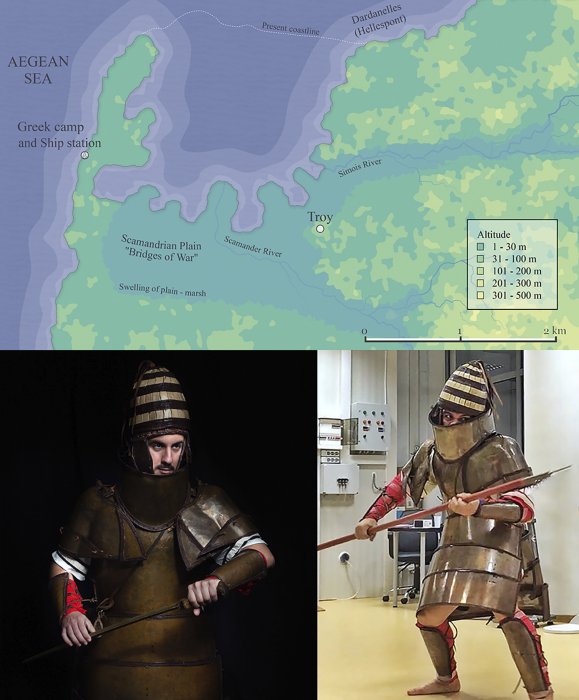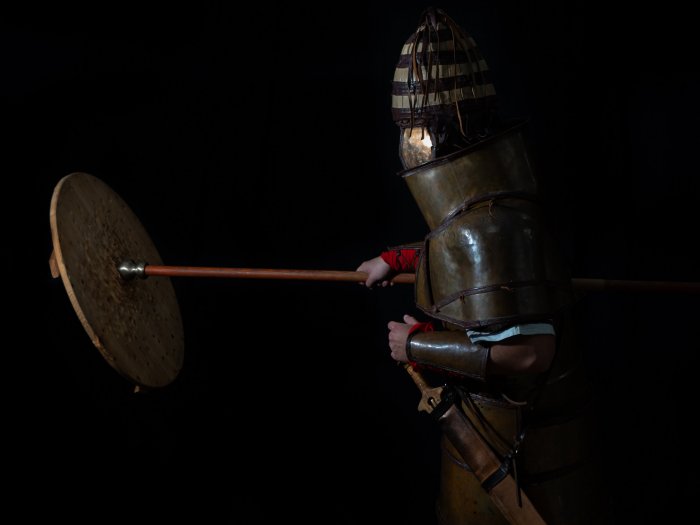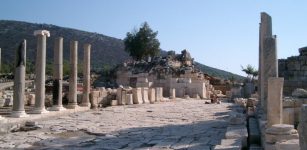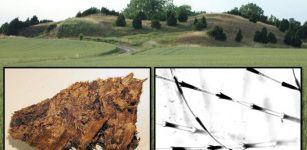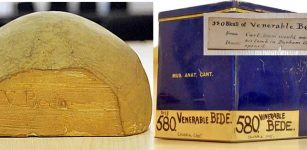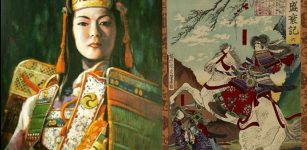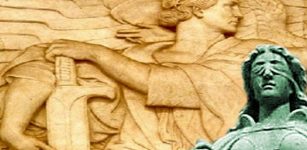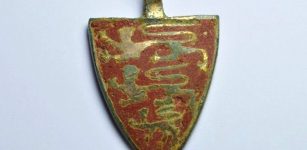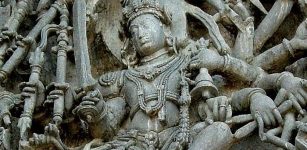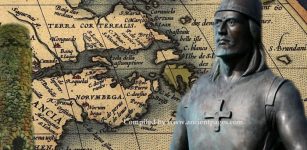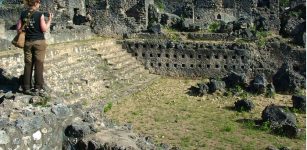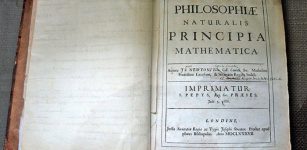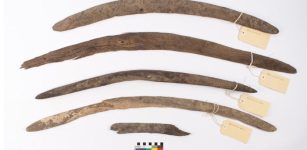Dendra Armor – 3,500-Year-Old Mycenae Armor Was Suitable For Extended Combat
Jan Bartek - AncientPages.com - One of the oldest known suits of European armor, the 3500-year-old Dendra suit, was discovered in 1960 near the village of Dendra, just a few kilometers from ancient Mycenae.
The panoply's cuirass, or body armor, consists of two main pieces covering the chest and back, joined together on the left side by a hinge. There are bronze loops on the right side of the front plate and each shoulder. Large shoulder guards fit over the cuirass, with two triangular plates attached to them, providing protection for the armpits when the wearer's arms are raised. Additionally, there is a deep neck guard, a typical feature of Near Eastern body armor, as evidenced by the Linear B ideogram depicting this type of armor.
Top: Geomorphology of the area surrounding Troy in the later phases of the Late Bronze Age (labels indicate the locations of the two army encampments and the geographic features of the area). The map was created using Azgaar's Fantasy Map Generator, a free web application, under a CC BY license, with permission from Max Haniyeu, original copyright 2017–2021. Bottom: Volunteer marine soldiers in simulated combat wearing the Dendra armour replica during the empirical study (right) and an artistic photo shoot (left). Photo credit: Andreas Flouris and Marija Marković. Permission required for reproduction. Credit: Flouris et al., 2024, PLOS ONE, CC-BY 4.0 (creativecommons.org/licenses/by/4.0/)
Three pairs of curved plates hang from the waist, designed to protect the groin and thighs. All these components are made of beaten bronze sheets backed with leather and loosely fastened with ox-hide thongs to allow for some movement. The complete panoply forms a tubular suit of armor, fully protecting the neck and torso and extending down to the knees.
Further protection was provided by lower arm guards and greaves, also made of bronze, as fragments of these were found in the grave at Dendra. Slivers of boars' tusks were also discovered, which once formed a boars'-tusk helmet.
Since the armor's discovery, there has been uncertainty regarding whether this suit was intended for ceremonial purposes or suitable for actual battle conditions.
A recent study has shed new light on the famous Mycenaean suit of armor known as the Dendra armor, revealing that it was not merely ceremonial but was designed for extended combat.
The findings suggest that the Dendra armor was battle-worthy, implying that the Mycenaeans' significant impact on Mediterranean history was partly due to their advanced armor technology.
This groundbreaking discovery sheds light on the nature of warfare during the Late Bronze Age in Europe. However, historical accounts from that era do not describe the use of this particular style of armor. To bridge this gap, researchers have undertaken a comprehensive study that combines historical and experimental evidence to assess the combat suitability of the Dendra armor.
The study, conducted by Andreas Flouris from the University of Thessaly, Greece, and his colleagues involved recruiting thirteen volunteers from the Marines of the Hellenic Armed Forces. These volunteers were outfitted with replicas of the Dendra armor and Bronze Age weapons and subjected to an eleven-hour simulated Bronze Age combat protocol. This combat simulation was meticulously designed based on historical accounts from Homer's Iliad, as well as additional physiological and environmental evidence, to accurately recreate the typical diet, activities, and maneuvers of the Mycenaean military.
Dendra armor. Credit: Schuppi - CC BY-SA 3.0
The experiment's findings revealed that the replicated Dendra armor did not impede a warrior's fighting ability or impose severe strain on the wearer. This suggests that the Dendra armor was a practical and effective form of protection during combat in the Late Bronze Age.
"The Dendra armor changed our understanding of the ancient world in two important respects. First, it had long been known that early Greek warriors, the Mycenaeans, were well supplied with weapons, but no armor had been found until that moment. Second, it disproved the popular assertion that the references to bronze armor in Homer’s Iliad were later interpolations so that his epic heroes would resemble the typical armor-wearing ‘hoplite soldiers’ of Archaic and Classical Greece.
The military aspects of Mycenaean society have long been evident from the massive fortifications, which have never been lost from view, and from the burials of a warrior elite first revealed by Schliemann’s excavations at Mycenae itself. Swords, spears, and the plates from boar’s tusk helmets are regular finds in tomb contexts and frequently illustrated in wall paintings and on seal stones. Shields and chariots are often illustrated but leave little trace in other aspects of the archaeological record.
Body armour, as worn by Homer’s warriors of the heroic age, was long regarded as poetic licence–or even later interpolation," the researcher write in their study.
Man wearing replica armor and hitting a sheild with a spear/staff. Credit: Andreas Flouris and Marija Marković.
These findings indicate that the Dendra armor possessed combat-ready capabilities, suggesting that the Mycenaeans' significant influence in Mediterranean history was partially attributable to their advanced armor technology. To further substantiate these results, the researchers have developed open-source software that enables simulations of combat scenarios, allowing for the hypothetical evaluation of the armor's effectiveness under diverse conditions.
See also: More Archaeology News
"Our results sustain the notion that the Mycenaeans had a powerful impact in the Eastern Mediterranean (as confirmed in Hittite and Egyptian documents) due, at least in part, to their armour technology. This may also help shed much-needed light on one of history’s most frightful turning points: the collapse of the Eastern Mediterranean Bronze Age civilisations towards the end of the 2nd Millennium BC; a time of destruction and upheaval that marked the beginning of the Age of Iron," the scientists conclude in their paper.
Continued research into Mycenaean combat technology will shed more light on the intricacies of the Late Bronze Age and the subsequent transition into the Iron Age.
The study was published in the journal PLOs One
Written by Jan Bartek - AncientPages.com Staff Writer

